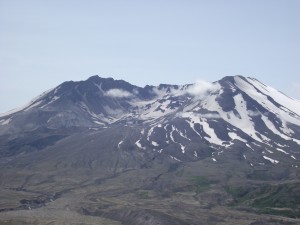March 16, 2012, by Tim Meadows
A day in the life of a Geographer… Tim Meadows
The week started off badly: a defeat for my 5-a-side football team on Monday night in a game we really should have won, during which I also picked up an ankle injury following a bit of a clumsy challenge on a slippery surface. Hobbling into the Sir Clive Granger Building on Tuesday morning bemoaning my misfortune and generally in a bit of a bad mood, I came to realise that actually I have very little to be disgruntled about. I’m a PhD student at a top-class University studying the subject that I have been passionate about probably since I was first aware that it existed: Geography.
It’s a brilliant discipline to be involved in. Geography is about as diverse as any one subject could ever wish to be, and when all the sub-areas are brought together within academic departments such as the one here at Nottingham, it’s a very exciting and stimulating place to study. Being a postgraduate student in such an environment is a real privilege, and to be given the opportunity to research something that you have a genuine interest in is one that I feel very lucky to have been given. My particular interests lie in fluvial geomorphology, so essentially water and mud – what more could you want?
My ramblings about Geography and my life as a postgrad student may have given you the impression that I’ve actually not done very much work this week, but that’s not entirely true. This is a fairly crucial time in my PhD. I’m about 18 months in with another 18 to go, and so the heat really is on to start generating some results. I’m using CAESAR, which is a landscape evolution model designed and developed by Professor Tom Coulthard from the University of Hull. It’s a great bit of software that facilitates large scale modelling of river catchments in order to estimate sediment yields; a particularly important issue at my study site of Mount St Helens (see picture). With the majority of the groundwork in terms of collecting data to drive CAESAR done during a field trip last summer, modelling began in earnest earlier this year.
A number of problems have been encountered since, but this week saw a new phase in the modelling process begin. I’ve spent quite a few weeks fiddling with input data, altering parameters and, quite often, breaking CAESAR. It’s been a useful exercise in finding out for myself the limitations of the model, what can and can’t be done, and how I can get the most out of it. All that messing around ended last week though, and I’m now into serious modelling. My previous experimentations have helped me develop a range of model set ups that I can use to start generating some meaningful results, and the first run began on Monday. I can then start analysing the model outputs in more detail, and the results of these analyses are likely to dictate the direction of my research over the coming months.
This week also saw a meeting of the 2012 RGS-IBG Postgraduate Mid Term Conference Organising Committee, of which I am a small part. Thanks to the endeavour of a number of excellent postgrads within the School, this annual event will be held at the University of Nottingham in April of this year. It promises to be a great occasion with postgrad students from across the country and from a range of Geography sub-disciplines descending on the Sir Clive Granger building to present their work, share ideas and to enjoy the delights of Nottingham. The event also boasts the welcome return of Professor Nick Clifford to deliver the keynote address, and I think the Conference is being eagerly anticipated by the entire Geography postgrad community.
No comments yet, fill out a comment to be the first


Leave a Reply